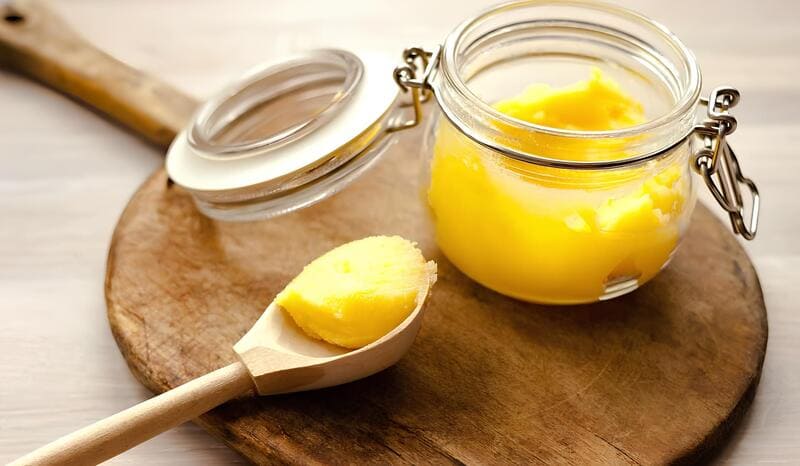
Egyptian ghee, also known as “samneh,” has long been a staple in Middle Eastern and North African kitchens. Its rich, nutty flavor and golden hue come from a meticulous clarifying process, making it unique from regular butter. Traditionally used in both sweet and savory dishes, this homemade ghee is cherished for its versatility and long shelf life.
In Egypt, ghee is commonly used to enhance dishes like kunafa, basbousa, fava beans, and more. This pure, vegan form of fat imparts a distinct taste, bridging the gap between the rich culinary heritage of Egypt and modern cooking practices. Its preparation is seen as an art, capturing the essence of traditional cooking passed down through generations.
Ingredients
- 1 kg unsalted butter
- Cheesecloth or fine sieve
Preparation
- Place the unsalted butter in a heavy-bottomed pot over very low heat.
- Allow the butter to melt slowly without stirring to avoid burning.
- As the butter melts, a white foam will form on the surface. Skim off this foam using a spoon and discard.
- Continue heating until the butter separates into three layers: a foamy top layer, a clear middle layer of golden liquid, and milk solids at the bottom.
- Carefully pour the clear middle layer into a clean, dry jar through a cheesecloth or fine sieve to strain out the milk solids.
- Let the ghee cool to room temperature before sealing the jar. Ensure it’s stored in a sterilized, airtight container.
Did you know?
Ghee is treasured not just in Egyptian cuisine but also across many other cultures, specifically in India, where it is known as clarified butter. Egyptians have a rich tradition of dairy farming, with many families priding themselves on making their own ghee from pure butter. This ingredient is beloved for its nutty aroma and ability to enhance both sweet and savory dishes.
Unlike regular butter, ghee can be stored for a much longer period without refrigeration, making it convenient for use in various climates. Historically, the slow cooking of the butter until transformation into ghee was an act of patience and skill, often a family affair that bonded generations. Additionally, it plays an important role in Lebanese food traditions and other Middle Eastern cuisines where its unique properties and health benefits are well-recognized.
So the next time you make a dish like basbousa or fried eggs, consider using homemade Egyptian ghee to bring that extra layer of flavor and tradition into your kitchen.
